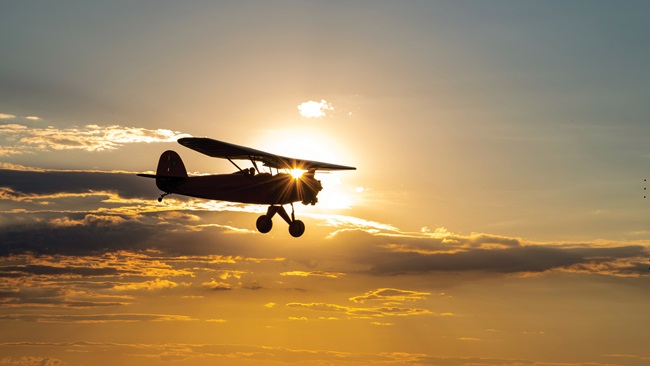Ampaire 337 'parallel hybrid' unveiled
Los Angeles-based Ampaire recently unveiled and demonstrated its Ampaire 337 at Camarillo, California. The three-year-old company claims the aircraft is the “highest capacity [largest] hybrid-electric airplane ever flown.”
The Ampaire 337 is a Cessna 337 Skymaster (N72342) with its rear, 210-horsepower Continental engine replaced with Ampaire’s proprietary electric-propulsion system. This is essentially a battery-powered electric motor. Although called a hybrid-electric airplane, it is not a hybrid in the sense of a hybrid automobile. The two powerplants are completely independent of one another, and the lithium-ion batteries that power the motor cannot be charged in flight.
In its current configuration, the batteries must be charged following a flight or replaced with a charged battery pack standing by on the ground, a process that will eventually be accomplished in less than 15 minutes. In the 337’s final configuration, the ship’s batteries will occupy part of a cargo pod attached to the belly of the airplane so as not to take up space in the cabin.
The centerline-thrust Cessna Skymaster was the obvious choice for this experimental aircraft because it allows differences in thrust to occur without creating any yawing (such as could result from different types of powerplants mounted on opposite wings of a conventional twin-engine airplane).
Although the motor installed in the aircraft is capable of producing 180 kilowatts of power (240 hp), it currently is limited to an output of 160 kW (215 hp) so as not to exceed by very much the maximum power for which the airplane was originally certified. Fully charged batteries enable the motor to generate maximum power for five to six minutes but last substantially longer at lower power settings.
Performance of the Ampaire 337 is essentially the same as that of an unmodified Skymaster.
The electric propulsion system adds approximately 400 pounds to the empty weight of the airplane, but this enables the aircraft to be flown with a relatively light load of fuel. As a result, useful load remains approximately the same. Furthermore, future weight of the electric system will decrease as battery efficiency increases.
Ampaire says the practicality of its system will increase significantly with the continuing improvement in the gravimetric energy density of batteries. (Gravimetric energy density is the amount of energy capable of being stored per unit of battery mass.)
Charging the batteries takes about two hours. The cost of the electrical energy needed for charging is less than half the cost of the equivalent amount of avgas.
The electric propulsion system is 85 percent quieter than the reciprocating engine that it replaces. What noise remains is created solely by the three-blade, variable-pitch propeller moving air rearward.
A second pre-production prototype of the Ampaire 337 will be used in a pilot project involving passenger-carrying service later this year by Mokulele Airlines, a commuter airline based in Kona on the Big Island of Hawaii. The airplane will be operated on a route connecting airports on Maui. Although the airplane seats six (including the pilot), it will be limited to a pilot and two non-paying passengers during this “experimental market survey.” A similar pilot project will involve Vieques Air Link, a regional airline in Puerto Rico. Ampaire hopes “to have regular commercial service for passengers and cargo as soon as 2021.”
The company’s long-range planning contemplates eventually developing single- and twin-“engine” airplanes powered solely by its proprietary electric-propulsion system(s).
Ampaire’s electric propulsion system is not yet practical for use by individuals because an infrastructure is required at en route and destination airports to charge and exchange replacement batteries.
I overheard a skeptic at Ampaire’s unveiling who questioned the practicality of a system with so many obvious limitations. This was reminiscent of when Benjamin Franklin was at a balloon launch in France. An observer there asked Franklin, “What good is it?” Franklin replied famously with, “Of what use is a newborn baby?”




